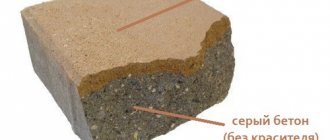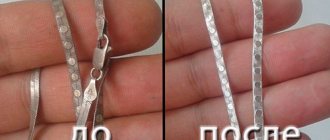Anyone who prefers to make repairs or do small jobs with their own hands has probably had to cut porcelain tiles at home. In the first tests, cutting porcelain tiles is more difficult than cutting tiles. It turns out a lot of defects, but in general the process itself is not much different from working with high-quality ceramic tiles.
The cutting line should be marked with an allowance for finishing.
Features of cutting porcelain stoneware
It should be noted that cutting very dense and hard porcelain tiles at home is sometimes even easier than in the case of ceramic tiles. Anyone who doesn’t believe it can try cutting overheated ceramics made on old Soviet or Chinese equipment at home. In comparison, cutting porcelain tiles does not look so problematic.
It is quite possible to cut porcelain stoneware without chipping, although some craftsmen claim that this is fundamentally impossible to achieve. If this were indeed the case, then most walls and steps covered with porcelain tiles would have wide joints, crooked and unattractive.
It's not even a matter of the hardness of porcelain stoneware. The technology for manufacturing artificial granite is such that as a result of pressing and deep firing, the material is obtained with virtually no internal stresses, and this is the key to the high quality of the cutting line.
In order to accurately and accurately cut porcelain stoneware at home, you only need to fulfill two conditions:
- Select the correct cutting mode, ensure constant and uniform pressure with the cutting tool on the cutting line of porcelain stoneware;
- Select the appropriate tool for the specific conditions of cutting the material.
It is clear that at home, the possibilities of cutting the material are significantly limited, but even in an apartment it is quite possible to cut porcelain stoneware without a tile cutter, although the amount of dust generated when working with electrical machines is initially scary.
How to cut porcelain tiles without chipping
At first glance, it seems that porcelain stoneware is difficult to process and cannot be cut with your own hands. However, if you follow the recommendations of experts, then anyone can do this. As already mentioned, regardless of the chosen tool, you should start cutting porcelain tiles exclusively from the front side, since chips tend to appear when the tool leaves the tile.
None More details about the cutting process using a manual tile cutter can be found in the instructions that come with it.
Where to cut porcelain tiles
Oddly enough, it is the tiny ceramic dust formed when cutting artificial ceramic granite that turns into the main problem. At home, it is most convenient to cut the material directly at the place where it is laid.
If you plan to cut tiles with a tile cutter, then you can cut porcelain tiles in any suitable place. In this case, the amount of chips and dust generated is insignificant, but the productivity at home is relatively small.
For curly cutting or cutting fairly thick porcelain stoneware slabs, you will have to use a grinder or a machine. You will have to work at home either in the courtyard of the house, or you will have to sacrifice a bathroom or toilet.
About porcelain tiles
Porcelain stoneware is a decorator’s dream come true about a material that combines the properties of ceramics and natural stone. Obtained by pressing powder from clay, sand and kaolin, ceramic granite fired in ovens has high decorative and performance qualities. The nature of production allows us to produce tiles of any color by introducing coloring oxides into the composition and any texture: glazed, matte, polished, structured. The material is stronger than granite, it is resistant to wear and aggressive environments.
The decorative panel is inscribed in the main background. The work was carried out cutting tiles - porcelain stoneware
How to cut porcelain tiles at home
From a technology point of view, there are two main ways to cut porcelain stoneware. To do this, you can use various tools and devices, but, regardless of the quantity and type of technical equipment, porcelain stoneware is still cut using two methods:
- Mechanical cutting of porcelain stoneware. In this case, the cutting line is selected with an abrasive tool;
- Piercing method. A deep scratch is cut on the surface of the porcelain stoneware along the future separation line. Next, a bending or shearing force must be applied to the porcelain stoneware, and the tile will split exactly according to the markings.
At home, you can use both methods, depending on the tools at your disposal, the amount of work and the thickness of the material. In addition, we have to take into account the complexity of the cutting line configuration. For example, if you need to cut at home a tile that is quite large in size and simply will not fit into a tile cutter, then you will need to look for a diamond cutting wheel and a grinder. For cutting at home, this is one of the most reliable methods.
Having laid the tiles on a sheet of plasterboard, you can cut the porcelain tiles with a grinder along almost any trajectory; it is only important to take your time and evenly press the edge of the disk against the surface of the porcelain tiles. Otherwise, you can easily overheat the tile at the cutting point, which will lead to chipping.
How to cut porcelain tiles with a tile cutter
A tabletop or floor-mounted device for cutting any type of facing tile is a small frame with guides installed at the top and a carriage with a carbide head. The carriage is operated by a lever or by an electric drive. A simple and convenient mechanism for home use.
At home, a tile cutter turns out to be the most accessible tool for cutting porcelain stoneware
Before cutting porcelain tiles, the tiles are laid on the frame and secured with plastic or metal stops. This is necessary to ensure that the material does not move during the cutting process. Next, we bring the head to the edge of the tile until it touches and push the lever away from us; the carriage with a diamond or carbide tip evenly passes over the surface of the tile, leaving behind a deep scratch.
All that remains is to break the porcelain stoneware into two parts with a slight but sharp movement. One way to cut porcelain tiles with a manual tile cutter is shown in the video:
Advantages of the method:
- It is very easy and comfortable to cut porcelain stoneware at home; you can master the cutting technique even with minimal experience and qualifications;
- A minimal amount of dust is generated, which is very valuable at home, especially if you plan to lay porcelain tiles on a small area of the floor or wall.
An electric tile cutter is similar in design to a circular saw for processing and sawing wood. In order to cut porcelain stoneware, you just need to set the size of the strip to be cut, after which you can cut in unlimited quantities.
Home compact version of an electric tile cutter
The disadvantages of the device include the fact that it is possible to cut only material of a certain shape and size, for example, it is very difficult to cut a thin strip of porcelain stoneware or make a cut of a non-standard, curved shape.
It is easier to cut a thin strip of porcelain stoneware with a grinder
How to cut porcelain tiles with a glass cutter
The technology for cutting tile material using a manual glass cutter is not much different from the previous method. The only difference is that instead of a carriage moving along guides, you have to cut porcelain stoneware with a small tool held in your hand.
In fact, this is an ideal method if you need to cut material at home. Instead of a frame device, a regular table, a metal ruler and the glass cutter itself are used. In order to cut porcelain stoneware, it is enough to place a ruler on the marking line and draw a diamond along the cut line.
To break the material, the tile is laid on the table so that the scratch line coincides with the edge of the tabletop, pressed on top with a board and with a sharp movement the material is broken into two halves. There is no simpler method for home use, but to master the technique, you need to practice cutting on waste porcelain stoneware or glass.
The advantage of this method is its simplicity and minimal amount of equipment required. It is easier to store a manual diamond glass cutter at home than a tile cutter. The disadvantage of this method is that you need to learn how to draw a line along the markings with a diamond at a constant speed, and the main thing is to do this continuously, in one movement, while accurately measuring the force applied to the surface of the porcelain stoneware.
In addition, it is very difficult to cut material with a glass cutter without chipping, so if possible, it is best to use a diamond rather than a carbide roller.
How to cut porcelain tiles with a jigsaw
Quite an unusual way of sawing porcelain stoneware slabs. Using an electric or manual jigsaw to cut very dense and hard material always raises some doubts among beginners. However, cutting ceramics and porcelain tiles with a jigsaw is quite possible even at home, but only if certain requirements are met:
- The tool needs to be prepared for sawing porcelain stoneware. A thin, necessarily soft material, maybe paper or rubber, is glued onto the sole. This is done in order not to scratch or damage the front surface of the slab;
- The second step is to turn off the pendulum oscillation-movement on the hacksaw blade feeding mechanism, otherwise the saw will cut with chips on porcelain stoneware;
- A special type of diamond-coated hacksaw blade is used to cut tiles.
Important! There is no point in even trying to cut a slab with standard titanium knives; the cutting edge wears out literally in the very first minutes of work, and the process itself stops without even going a few centimeters.
In addition, the stove itself must be securely fixed to the countertop using clamps, and a rubber strip must be placed under the porcelain stoneware to reduce vibrations. The method for cutting porcelain tiles is quite simple and does not require special skills, ideal for use at home. It is valuable that a jigsaw is very easy to perform shaped cutting of porcelain stoneware.
You can also cut tiles with a hand jigsaw, sometimes there is simply no other tool at home, although it will take several times longer, but it is possible to get a very accurate and high-quality cut. In this case, the side edges of the hacksaw blade are ground off, and emery powder is fed into the seam during the sawing process.
Curvilinear cutting of porcelain tiles
Advice! If possible, it is better to replace the blade with diamond-coated wire; this method produces fewer chips, especially if you cut porcelain stoneware with periodic addition of water at the cutting point.
It is believed that this method is the cleanest of all mechanized options, which is especially important if you have to work at home, without an exhaust hood or a vacuum cleaner.
How to cut porcelain tiles with a circular saw
Porcelain tiles can be cut and cut without much trouble using a more powerful cutting tool, such as a hand-held circular saw. Engine speed and power allow you to cut almost anything at home, from wood to metal profiles.
In order to cut porcelain stoneware, the tool must be retrofitted:
- First, the standard carbide-tipped saw blade must be replaced with a diamond wheel;
- Secondly, a ring-bandage is placed under the disk mount, thanks to which it is possible to dampen vibrations and uncontrolled bending of a thin and flexible diamond wheel.
Converting a saw to porcelain stoneware
The process of sawing material is not much different from working with an electric tile cutter; the only difference is that the engine power is noticeably higher. Therefore, you need to carefully control the feed of the diamond wheel with minimal effort, otherwise the porcelain stoneware will quickly overheat and crack.
If you need to cut porcelain tiles in large quantities, then there is no better option than an electric machine.
This method of sawing porcelain stoneware is considered the most productive, but at home it is used for short-term trimming of a small amount of material. You can only work in the yard, garage, shed, but under no circumstances inside a living space. The amount of dust that is generated when sawing even a small amount of material is approximately an order of magnitude higher than all other cutting methods. The only indisputable advantage of this option is that using a circular saw and a diamond wheel you can cut porcelain stoneware at 45 degrees.
Water cutting of porcelain tiles
The most highly productive and at the same time accurate method of sawing very hard natural and artificial granites is considered to be the waterjet system. It allows you to cut out entire designs and three-dimensional images. The system is quite powerful and allows cutting porcelain stoneware up to 200 mm thick. At home, such equipment is not used for obvious reasons.
You can cut using water on a hydromechanical machine. The use of water or a water emulsion can significantly reduce the heating temperature of the tool and the porcelain stoneware itself. The result is less wear and higher surface quality. The emulsion is applied to the edge of the wheel, but not to the surface of the ceramic.
A diamond wheel mounted on the motor rotor is fed along the machine guides along the surface of the porcelain stoneware; coolant is supplied from a special reservoir directly to the cutting zone. This method is considered the most harmless, since almost all dust is washed off with water and removed from the surface of porcelain stoneware. It is clear that cutting material in this way is possible if you can find a separate room at home, for example, in a garage or shed.
Such machines have very high characteristics and cutting speed, therefore, if you plan to cut porcelain stoneware of complex shapes and sizes at home, then using a hydromechanical machine will be the best option.
Bulgarian
An angle grinder is a tool that will help out if you don’t have any other cutting tool. Next, about the advantages and disadvantages of the grinder.
With a grinder, you can trim any shape and size, and sand a 45-degree angle. To work, you need a special diamond disc for tiles: smooth and without holes.
Pros:
- Availability. There is an angle grinder in almost every home; all you need to do is purchase a diamond wheel.
- Possibility of figure cutting. The mobility of the tool allows you to cut out almost any shape - all it takes is skill.
- Many people have some skill in working with angle grinders; this ensures quick mastery of the trimming process.
Minuses:
- Noise and dust. Working with an angle grinder comes with “audio accompaniment” and a lot of dust.
- An angle grinder is a dangerous tool. Careless movement and negligent attitude to safety precautions can easily lead to injuries.
- Poor quality cut. Depending on the quality of the grinder, the degree of chips and microcracks in the tiles differs, but there are always flaws. Finishing the cut by grinding partly solves the problem, but it is better to use an angle grinder for working with tiles that, from an aesthetic point of view, are not of great importance - the cut points should be hidden.
Techniques for safe working with an angle grinder: https://www.youtube.com/watch?v=fvqotukmgEo Having marked the cutting line, cut a couple of millimeters from it - the diamond wheel “eats” part of the ceramics. Set the circle according to the direction of movement of the mechanism; there is an indicating arrow on the cutting element. While working, try to drive the car back and forth less, this will reduce the number of chips. This advice does not work when cutting thin pieces of porcelain stoneware; here the desire to cut in one pass will result in the slab breaking.
Choose a diamond wheel responsibly and buy high-quality consumables. Otherwise, there is a risk of destruction of the element, which at enormous speed leads to injury. Give preference to circles without ventilation (gaps), ceramics do not like them. Video about choosing a diamond wheel for cutting porcelain stoneware: https://www.youtube.com/watch?v=5Bn8ab9DkRI A dull “diamond” can be restored to working condition using a brick. Go over it 2-3 times with a cutting element, this will rid the circle of accumulated dirt. How to make a narrow trim: https://www.youtube.com/watch?v=uCTfHEy2j7g
Advice from professionals
Oddly enough, the greatest number of problems arise not even with the drive or tool used for processing porcelain stoneware, but directly with the diamond disc. The main complaint about diamond is the rapid loss of cutting ability. As a result, as feed and force increase, the edge of the wheel heats up and begins to lose diamond powder. If you try to cut at home in this mode for at least 10-20 seconds, then there will be nothing left of the expensive disk.
In this case, before each cut, the edge is cleaned and restored; at home, this can be done on ordinary red brick by making several small cuts. This removes soft material stuck to the diamond strip.
Experienced craftsmen, before cutting porcelain tiles, soak the material for 10-15 minutes in water. Artificial granite absorbs moisture very poorly, but a small amount of water still remains on the edge of the slab. As a result, the first time the cutting edge touches the surface, you are guaranteed to get a beautiful entry hole without chips.
Traditional methods of cutting tiles
If you have to process a not very thick tile, which you plan to use to cover a small area, then, with sufficient dexterity and existing skills, the operation can be performed using a standard glass cutter . Problems may arise for those who are going to do this for the first time. Since some of the tiles will split in the most inappropriate places, some margin should be provided . Unfortunately, wasted material and costs are inevitable in this case.
The next, more modern technology involves the use of a mechanical tile cutter . To begin with, the tile is inserted into the appropriate niche for fixation, after which an incision is made with a tile cutter roller. The procedure ends by breaking the element into two parts.
It happens that a cut with a curly profile rather than a straight one is required. There are also several options here, such as diamond wire or a file, which are inserted into a hand jigsaw . However, the cutting procedure itself is very long and painstaking. This method is appropriate if you need to process a small volume of tile material or in cases where the cut has a broken line and other methods are not suitable.
Another solution for forming a figured cut is an electric jigsaw , also equipped with a file for granite or tile. It is recommended to moisten the cut site generously during processing - this will reduce the risk of chipping, especially on tiles with a glazed surface or when the thickness of porcelain stoneware exceeds standard values.
Often in finishing work it is necessary to perform drilling on the tiles. To obtain small-diameter holes, a standard drill with a special drill bit for tiles may be suitable. If you need to create a hole of large diameter, then use a device called “ballerina” .
Technologies for complex, shaped cutting of tile material
Quite often, when installing tiles, it becomes necessary to cut out complex elements from solid material. Also, you may need to cut porcelain stoneware (floor) tiles. Let's look at the most popular fragmentation options:
We cut the tiles with the letter “G”
Since a tile cutter or grinder can only cut tiles in a straight line, difficulties arise with L-shaped cutting. The simplest solution is to divide the tiles into several rectangular pieces and then install them on the wall or floor. However, in this case there will be a noticeable, unsightly additional seam.
This defect can be easily avoided - you need to cut the long side with a tile cutter, and the short side with a grinder. The same technique is used to trim external corners. When marking them, you should carefully subtract 2.6 mm for the grout joint and 1.35–1.8 mm for the distance from the wall surface.
There is another way to make an L-shaped cut. Using any acceptable method, a figured cut is made on the glaze surface, and then the excess part is gradually chipped off piece by piece using ordinary pliers. After completion, the remaining irregularities are erased with sandpaper or an abrasive stone. In this way, semicircular cuts can be made on tiles adjacent to various pipes.
We competently cut porcelain floor tiles
It is not unreasonably believed that floor tiles are the strongest and hardest among their analogues. Despite this, it can be cut using the same methods as simple tiles.
Another thing is cutting special, hardened tiles. Using a tile cutter is ineffective here, since there are practically no scratches on the glaze. Even the diamond blade of an angle grinder cannot take such a tile - it results in a very torn cut. The hardened tile material must be cut from the back side, where a 2.3–3.1 mm groove is filed with a grinder disc, defining the break line. Then, the tiles are laid face down on the edge of the table. The cut groove should fit perfectly with the edge of the workbench or table. Sharply applied, strong pressure on the edges will ensure an even split of the tile strictly along the groove.
We make a 45-degree cut on the tile edge
Many tilers, in order to make external corners look beautiful, file down the tile edges (45 degree angle) so as not to additionally install ceramic corners. But in places where there is a risk of slipping and falling to the floor, it is better to install special pencil curbs to prevent dangerous injuries.
Forming a 45-degree edge angle is quite easy with a special electric model of tile cutter, since it has a special inclined platform that makes it possible to create beveled edges on the tiles. However, only professional craftsmen have such a tool. Making an edge corner at home is relatively easy with an ordinary grinder, so to speak, “by eye.” It is necessary to draw a slightly inwardly inclined disc along the cut line. If adjustments are needed, they can be made with an abrasive stone.
In principle, anyone can do high-quality cutting of ceramic tiles, especially after acquiring the basic skills for such work. When there was no such practice, it is recommended to purchase tile material with a 12–16% reserve, designed for unsuccessful attempts at cutting yourself.
Quite often, hardware stores themselves provide services for cutting or sawing ceramic tiles to the required sizes and shapes. However, here you need to know exactly the required dimensions.
Porcelain stoneware is one of the hardest materials used for various coatings (floors, walls, kitchen tables, etc.). During the installation process, there is a need to cut porcelain tiles. For large volumes, the recommendation is clear - a professional tool. At home, you can get by with one of the following methods, or a combination of them (especially if you take into account the little tricks):
- angle grinder (grinder);
- manual tile cutter.
Waterjet unit
This tool is used in industrial enterprises. Tile cutting is carried out with a mixture of water and solid crumbs, the thickness of the jet is tenths of a millimeter. In conclusion, we can say that there are many tools suitable for cutting porcelain tiles. Which one is preferred depends on the volume of the tile and the frequency of its processing.
If this is a one-time cutting for finishing small rooms, then it is better to use electrical appliances already available at home, such as an angle grinder or electric saw. If you plan to continue processing ceramic tiles in the future, then it makes sense to purchase special equipment.
In the process of performing any finishing work using porcelain stoneware, the need invariably arises to cut off excess slabs or give it the desired shape. Such a need may arise if there is a discrepancy between the dimensions of the room and the fabric of the laid slabs, or if the finishing involves the formation of shaped elements. In such cases, the question is naturally asked: how to cut porcelain stoneware?
Professional builders recommend several tools for this task, but two main ones are accepted for widespread use - a tile cutter and a grinder with a diamond blade.











